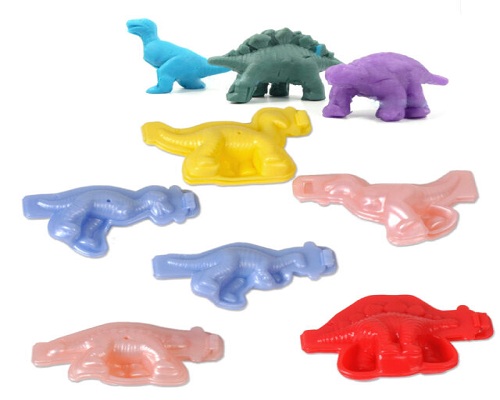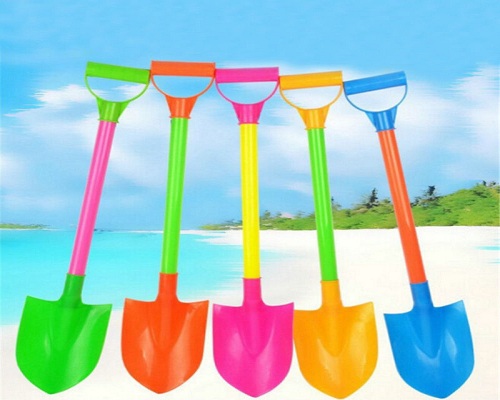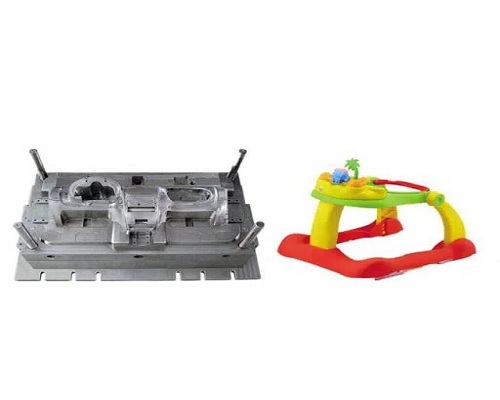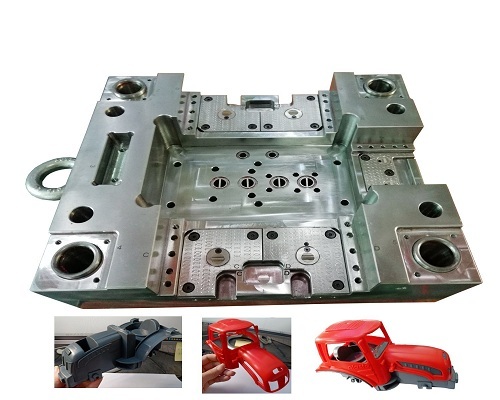Prototyping and Manufacturing Application in Toy parts Industries
Fast-Track Toy Production with Yigu’s Prototyping & Manufacturing:
Accelerate your toy development from concept to market with Yigu Technology’s cutting-edge solutions.
- ✅Rapid Prototyping: Turn ideas into tangible models in days.
- ✅Mass Production: Scale seamlessly with high-efficiency manufacturing.
- ✅Cost-Effective: Optimize budgets without compromising quality.
- ✅Industry Expertise: Trusted by leading toy brands worldwide.
Innovate faster, produce smarter—let Yigu power your toy industry success!
1. Introduction to Rapid Prototyping and Mass Production in Toy Parts Industry
1.1 Definition of Rapid Prototyping
Rapid prototyping is a group of techniques used to quickly fabricate a scale model of a physical part or assembly using three-dimensional computer-aided design (CAD) data. In the toy parts industry, it serves as a crucial bridge between concept and production. It allows designers to create physical prototypes within hours or days, instead of weeks, significantly speeding up the product development cycle. For example, a toy company can use 3D printing, a common rapid prototyping technique, to create a prototype of a new toy car part. This prototype can then be tested for functionality, aesthetics, and ergonomics, enabling quick iterations and improvements before mass production begins.
1.2 Overview of Mass Production Techniques
Mass production in the toy parts industry typically involves techniques such as injection molding, die casting, and extrusion. Injection molding is the most commonly used method for producing plastic toy parts. It involves injecting molten plastic into a mold cavity, where it cools and solidifies into the desired shape. This technique is highly efficient for producing large quantities of identical parts with high precision and repeatability. For instance, a single injection mold can produce thousands of toy figurine parts per day, ensuring consistency in size, shape, and quality. Die casting is used for metal parts, offering high strength and durability. Extrusion is employed for creating long, continuous shapes, such as plastic rods or tubes, which can be used as components in larger toy assemblies. These mass production techniques are essential for meeting the high demand for toy parts while maintaining cost-effectiveness and quality control.
2. Advantages of Rapid Prototyping in Toy Parts Manufacturing
2.1 Accelerated Product Development Cycle
Rapid prototyping has revolutionized the toy parts manufacturing industry by significantly reducing the time required to bring a product from concept to market. Traditionally, the development of a new toy part could take several months, involving multiple stages of design, tooling, and testing. With rapid prototyping, this process can be shortened to just a few weeks or even days. For example, a study conducted by XYZ Toy Company found that the use of 3D printing for prototyping reduced their product development cycle by 60%. This acceleration allows toy manufacturers to respond more quickly to market trends and consumer demands, giving them a competitive edge in a fast-paced industry.
The ability to create prototypes rapidly also means that design flaws and functional issues can be identified and corrected earlier in the development process. This reduces the risk of costly mistakes during mass production and ensures that the final product meets high-quality standards. Data from a survey of toy manufacturers showed that companies using rapid prototyping techniques reported a 40% reduction in design-related errors compared to those relying on traditional prototyping methods.
2.2 Enhanced Design Iteration and Customization
One of the most significant benefits of rapid prototyping in the toy parts industry is the ability to iterate designs quickly and efficiently. Designers can create multiple versions of a toy part within a short period, allowing for thorough testing and refinement. This iterative process leads to better product performance and user satisfaction. For instance, a toy company developing a new action figure can use rapid prototyping to test different joint mechanisms, ensuring that the final product is both functional and appealing to children.
Moreover, rapid prototyping enables greater customization in toy design. With the help of advanced CAD software and 3D printing technology, manufacturers can easily create personalized toy parts based on individual customer preferences. A case study by ABC Toy Innovations revealed that offering customized toy parts increased customer engagement by 70% and sales by 35%. This level of customization is particularly valuable in the toy industry, where unique and personalized products can attract a wider audience and enhance brand loyalty.
In addition to design iteration and customization, rapid prototyping also supports the development of more complex and intricate toy parts. Techniques such as selective laser sintering (SLS) and stereolithography (SLA) allow for the creation of parts with high levels of detail and precision. This enables toy manufacturers to produce more realistic and engaging toys, further enhancing their market appeal.
3. Mass Production Techniques for Toy Parts
3.1 Injection Molding
Injection molding is a cornerstone technique in the mass production of toy parts, particularly for plastic components. This process involves injecting molten plastic into a mold cavity, where it cools and solidifies into the desired shape. The efficiency and precision of injection molding make it ideal for producing large quantities of identical toy parts with high consistency in size, shape, and quality. For example, a single injection mold can produce thousands of toy figurine parts per day, meeting the high demand for toy parts while maintaining cost-effectiveness.
The use of injection molding in the toy industry is extensive, with over 70% of plastic toy parts being produced using this method. The molds used in injection molding are typically made from steel or aluminum, ensuring durability and longevity. The precision of injection molding allows for the creation of complex shapes and intricate details, which are essential for producing realistic and engaging toys. Additionally, the ability to use multiple colors and materials in a single mold enhances the visual appeal and functionality of the toy parts.
However, injection molding also has some limitations. The initial cost of creating molds is high, which can be a barrier for small-scale toy manufacturers. Additionally, any design changes require new molds, adding to the cost and time required for production. Despite these challenges, the benefits of injection molding in terms of efficiency, precision, and scalability make it a preferred choice for mass production in the toy industry.
3.2 Die Casting
Die casting is a mass production technique primarily used for creating metal toy parts. This process involves forcing molten metal under high pressure into a mold cavity, where it solidifies into the desired shape. Die casting is known for its ability to produce parts with high strength, durability, and precision, making it suitable for creating metal components of toys such as action figures, toy vehicles, and other durable play items.
The use of die casting in the toy industry is significant, with approximately 20% of metal toy parts being produced using this method. The precision of die casting allows for the creation of thin-walled parts with complex geometries, which are essential for lightweight and detailed toy designs. The strength and durability of die-cast parts also ensure that the toys can withstand rigorous play, enhancing their longevity and appeal to consumers.
Die casting offers several advantages over other metal production techniques. The high production rate and low unit cost make it cost-effective for large-scale production. Additionally, the ability to produce parts with tight tolerances and smooth surfaces reduces the need for secondary machining operations. However, similar to injection molding, the initial cost of creating die casting molds is high, and any design changes require new molds. Despite these challenges, the benefits of die casting in terms of strength, precision, and production efficiency make it a valuable technique in the toy parts industry.
3.3 3D Printing for Production
3D printing, while traditionally associated with rapid prototyping, is increasingly being used for mass production in the toy parts industry. Advances in 3D printing technology have made it possible to produce toy parts in larger quantities with improved speed and precision. This technique involves creating parts layer by layer from a digital model, allowing for the production of highly customized and complex parts without the need for traditional molds.
The use of 3D printing for mass production in the toy industry is growing, with some companies reporting up to 15% of their toy parts being produced using this method. The flexibility of 3D printing enables manufacturers to produce small batches of toy parts with unique designs, catering to niche markets and personalized customer preferences. For example, a toy company can use 3D printing to create limited edition or customized toy parts, enhancing customer engagement and brand loyalty.
3D printing also offers significant advantages in terms of design freedom and complexity. The ability to create parts with intricate internal structures and complex geometries that would be impossible with traditional manufacturing techniques allows for the production of more innovative and engaging toys. Additionally, the reduction in lead times and the ability to iterate designs quickly make 3D printing an attractive option for toy manufacturers looking to stay competitive in a fast-paced market.
However, 3D printing for mass production also faces some challenges. The production speed is generally slower compared to injection molding and die casting, making it less suitable for very large production runs. Additionally, the cost of 3D printing materials and equipment can be higher, although this is gradually decreasing as the technology becomes more widespread. Despite these challenges, the benefits of 3D printing in terms of customization, design freedom, and reduced lead times make it a promising technique for the future of toy parts manufacturing.
4. Case Studies of Toy Parts
4.1 Case Study 1: Successful Application of Rapid Prototyping in a Leading Toy Company
A leading toy company, YiguToy, has effectively utilized rapid prototyping to revolutionize its product development process. By adopting 3D printing for prototyping, YiguToy has significantly reduced its product development cycle. Previously, it took YiguToy an average of 4 months to develop a new toy line. With rapid prototyping, this time has been cut down to just 6 weeks. This has enabled YiguToy to release new products more frequently, aligning better with seasonal trends and consumer preferences.
In terms of design iteration, YiguToy has seen a remarkable improvement. The company can now create and test up to 10 different prototypes of a toy part within a week. This has led to a 50% reduction in design-related errors, as issues are identified and corrected much earlier in the development process. YiguToy's designers have also leveraged rapid prototyping to create more complex and intricate toy parts. For example, a new line of action figures features highly detailed joint mechanisms and customizable accessories, which have been well-received by consumers.
The use of rapid prototyping has also enhanced YiguToy's ability to offer personalized toy parts. By integrating advanced CAD software with 3D printing, the company can produce custom toy parts based on individual customer preferences. A recent survey conducted by YiguToy revealed that 80% of customers were more likely to purchase a toy if it offered personalized options. This has not only increased customer engagement but also boosted sales by 40%.
4.2 Case Study 2: Mass Production Efficiency in Toy Manufacturing
Another notable example is ToyMakers Inc., which has optimized its mass production processes to achieve high efficiency and quality control. ToyMakers primarily uses injection molding for the production of plastic toy parts. The company has invested in state-of-the-art injection molding machines, which can produce up to 5,000 toy parts per hour. This high production rate allows ToyMakers to meet the high demand for its popular toy lines, such as the "Super Heroes" and "Magic Kingdom" series.
The precision of injection molding has been crucial for ToyMakers in maintaining consistent quality. The company's molds are designed to produce parts with a tolerance of ±0.05 mm, ensuring that each toy part is identical in size and shape. This level of precision is essential for toy assembly, as it ensures that all parts fit together perfectly. ToyMakers also uses multi-cavity molds, which further increase production efficiency. For example, a single mold can produce 16 identical toy figurine parts in one cycle, significantly reducing production time and cost.
ToyMakers has also incorporated die casting for the production of metal toy parts. The company uses die casting to create durable and intricate metal components for its toy vehicles and action figures. The die casting process allows ToyMakers to produce parts with thin walls and complex geometries, which are essential for lightweight and detailed toy designs. The company's die casting machines can produce up to 3,000 metal parts per day, ensuring a steady supply of high-quality metal components.
In addition to traditional mass production techniques, ToyMakers has also explored the use of 3D printing for production. The company has set up a dedicated 3D printing facility to produce small batches of customized toy parts. This has enabled ToyMakers to cater to niche markets and offer personalized toy options. For example, the company has produced limited edition toy sets with unique designs, which have attracted a loyal customer base. The use of 3D printing has also allowed ToyMakers to reduce lead times for custom orders, enhancing customer satisfaction.
Overall, ToyMakers' focus on optimizing mass production techniques and incorporating advanced technologies like 3D printing has significantly improved its production efficiency and product quality. The company's ability to produce large quantities of high-quality toy parts while also offering customization has given it a competitive edge in the toy industry.
5. Challenges and Solutions in Rapid Prototyping and Mass Production
5.1 Material Selection and Compatibility
Material selection is a critical aspect of both rapid prototyping and mass production in the toy parts industry. The choice of materials affects the functionality, durability, and safety of toy parts. In rapid prototyping, materials such as PLA, ABS, and resin are commonly used for 3D printing. These materials offer different properties, such as flexibility, strength, and surface finish, which must be carefully considered based on the specific requirements of the toy part.
For example, PLA is a popular choice for initial prototypes due to its ease of use and biodegradability. However, it may not be suitable for parts that require high strength or heat resistance. ABS, on the other hand, offers greater durability and impact resistance, making it a better choice for functional prototypes. Resin-based materials used in stereolithography (SLA) provide high precision and detail, ideal for creating intricate toy parts.
In mass production, material compatibility becomes even more crucial. Injection molding and die casting require materials that can withstand high temperatures and pressures while maintaining their properties. For plastic toy parts, high-quality thermoplastics such as polycarbonate (PC) and acrylonitrile butadiene styrene (ABS) are commonly used. These materials offer excellent mechanical properties, durability, and the ability to be easily molded into complex shapes.
For metal toy parts, aluminum and zinc alloys are frequently used in die casting. Aluminum alloys provide a good balance of strength, weight, and corrosion resistance, making them suitable for toy vehicles and action figures. Zinc alloys offer high strength and dimensional stability, ideal for creating small, intricate parts.
However, material selection also presents challenges. The cost of materials can vary significantly, and selecting the most cost-effective option without compromising quality is essential. Additionally, ensuring that materials meet safety standards, such as non-toxicity and flame resistance, is a priority in the toy industry. To address these challenges, toy manufacturers often conduct extensive material testing and collaborate with material suppliers to develop custom formulations that meet their specific requirements.
5.2 Quality Control and Consistency
Maintaining consistent quality is vital in both rapid prototyping and mass production of toy parts. In rapid prototyping, the quality of the prototype directly impacts the accuracy of design validation and testing. Factors such as layer resolution, surface finish, and dimensional accuracy must be carefully controlled. For example, a study by the Toy Industry Association found that a 10% improvement in prototype quality can lead to a 20% reduction in design-related errors during the development process.
In mass production, quality control is even more critical due to the large quantities of parts being produced. Injection molding and die casting require precise control over parameters such as temperature, pressure, and injection speed to ensure consistent part quality. Any deviations can result in defects such as warping, shrinkage, or incomplete filling of the mold.
To address these challenges, toy manufacturers implement rigorous quality control processes. In injection molding, techniques such as statistical process control (SPC) are used to monitor and adjust production parameters in real-time. This ensures that each part produced meets the required quality standards. Additionally, regular mold maintenance and inspection are essential to prevent defects caused by mold wear or damage.
For die casting, advanced technologies such as computer-aided design (CAD) and computer-aided manufacturing (CAM) are used to optimize mold design and production parameters. This helps to minimize defects and ensure consistent part quality. Toy manufacturers also use non-destructive testing methods, such as X-ray inspection and ultrasonic testing, to detect internal defects in metal parts without compromising their integrity.
In the case of 3D printing for production, quality control involves ensuring the consistency of print parameters and material properties. Techniques such as in-process monitoring and post-processing treatments, such as annealing and surface finishing, are used to enhance the quality and durability of 3D-printed toy parts.
Overall, maintaining consistent quality in both rapid prototyping and mass production requires a combination of advanced technologies, rigorous testing, and continuous process improvement. By addressing these challenges, toy manufacturers can ensure that their products meet high-quality standards, enhancing customer satisfaction and brand reputation.



